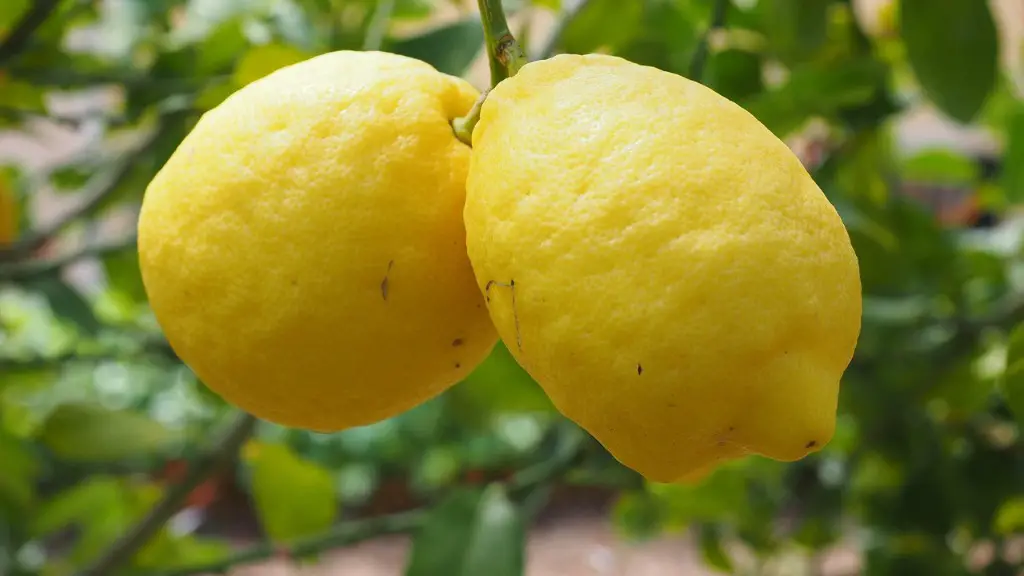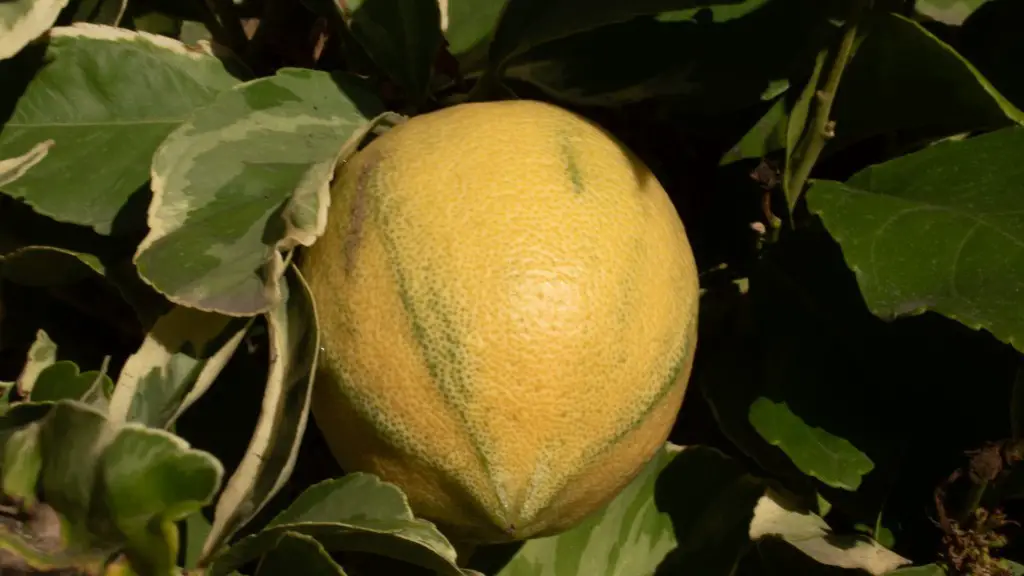Lemon trees are an important crop in many countries, and are a popular ingredient in various recipes and drinks. They are easy to grow, and productive, with a lifespan of between 15-20 years. The question then arises: How long do lemon trees produce fruit? The answer is they will produce fruit, two to three times a year, throughout the course of their life.
The duration of time in which a lemon tree produces fruit begins when the tree is young and continues until it reaches its maturity. On average, a lemon tree needs around 5-year for it to produce its first fruits. During this period, the tree should develop a strong trunk, a good number of branches and a large number of healthy and vigorous leaves, which will be essential to the production of lemons.
Once the lemon tree has reached maturity, it can produce fruits two to three times in a single year, with each season offering a different type of lemon. The first season will offer small, green lemons, while the second season will produce larger and juicy lemons. The final season will produce the ripest and sweetest lemons, a sign that the tree has reached its full potential.
In order to ensure that the lemon tree stays productive for a long time, it is important to pay attention to the tree’s needs. Fertilizing the lemon tree regularly, as well as making sure it receives enough water and sunlight are some of the most important aspects that must be taken into consideration. Additionally, it is important to prune the lemon tree regularly to prevent it from becoming overcrowded and to maintain its shape and size.
The lifespan of a lemon tree can vary depending on the climate where it is grown and how it is cared for. If the tree is exposed to extreme weather conditions, such as frost or extremely hot temperatures, it will likely reduce its lifespan significantly. Additionally, if the lemon tree is not properly taken care of, it may begin to produce fewer and fewer fruits over the years.
Soil Conditions
One of the most important factors in lemon tree production is the soil in which it is grown. The ideal soil for lemon trees should be slightly acidic and rich in organic matter, as it is important for the optimal growth and development of the tree. Additionally, a well-draining soil is preferred, helping the lemon tree remain healthy.
It is also important to keep the soil around the tree weed-free, as weeds will compete for the lemon tree’s resources, leading to a reduced yield. Additionally, mulching can be used as a means of keeping the soil cool, moist and weed-free, as well as fertilizing it naturally.
Fertilizing
Fertilizing is an important step of keeping a lemon tree healthy and producing fruit. Lemon trees thrive off of a balanced nitrogen-phosphorus-potassium fertilizer, which should be applied every couple of months. The amount of fertilizer to be used depends on the size of the tree and the type of fertilizer chosen. Additionally, it is important to keep an eye on the pH level of the lemon tree’s soil, as it can affect its productivity.
When fertilizing a lemon tree, it is important to always follow the manufacturer’s instructions. It is also important to remember that fertilizing too much can have a negative effect on the tree and its production capacity. Additionally, the type of fertilizer used should be adapted to the climate in which the tree is grown, as well as its age and health.
Harvesting
The harvesting time of a lemon tree can vary depending on its variety and the type of climate in which it is grown. Generally speaking, the ideal time for harvesting lemons is when the fruit has developed a slightly yellowish hue, and when its skin has become slightly soft. If the fruits are not harvested at the right time, their shelf life will be considerably reduced.
To harvest the fruits, it is important to use the right tools, such as a pair of scissors or a harvesting knife. It is important to place the picked fruits in a basket or box with air holes, as this will preserve their freshness and taste. Additionally, the fruits can also be stored in a cool, dark place, where they can keep good for several days.
Pest Control
In order to keep a lemon tree healthy and productive, it is important to regularly inspect it for pests and diseases. Common pests for lemon trees include aphids, citrus thrips and spider mites, all of which can cause serious damage, if left unchecked. It is important to inspect the tree regularly and to act quickly if any pests are found.
The most common method of pest control is to use an insecticide, although other natural methods can be used as well. Additionally, some plants have natural predators that can help to keep the pests away, such as ladybugs and spiders. Finally, it is important to remember that the use of insecticides should always be done with caution, as they can be toxic to other plants and wildlife.
Pruning
Pruning is an important step of keeping a lemon tree healthy, as it helps to remove any dead and diseased branches, as well as to keep the tree balanced and well-shaped. The best time to prune a lemon tree is during the winter season, when the tree is not actively growing and producing fruits.
When pruning, it is important to pay attention to the shape of the tree and only remove the branches that are unnecessary and do not bear fruits. Additionally, it is important to always use the right tools when pruning, such as a pruning saw or a pruning shear, and to disinfect the tools before and after pruning to prevent the spread of diseases.
Pollination
Pollination is a crucial step of keeping a lemon tree productive, as it ensures the fertilization of the flowers, leading to the production of fruits. The best way to pollinate a lemon tree is by using a paint brush or a cotton swab, mechanically transferring the pollen from the male parts to the female parts of the flowers. Additionally, it is possible to use natural pollinators, such as bees, although this is not always possible due to certain environmental factors.
It is important to remember that pollination is dependent on temperature and humidity levels, as well as the availability of pollen sources for the natural pollinators. Additionally, the type of pollination method used can have an impact on the quality and quantity of the fruits produced.


